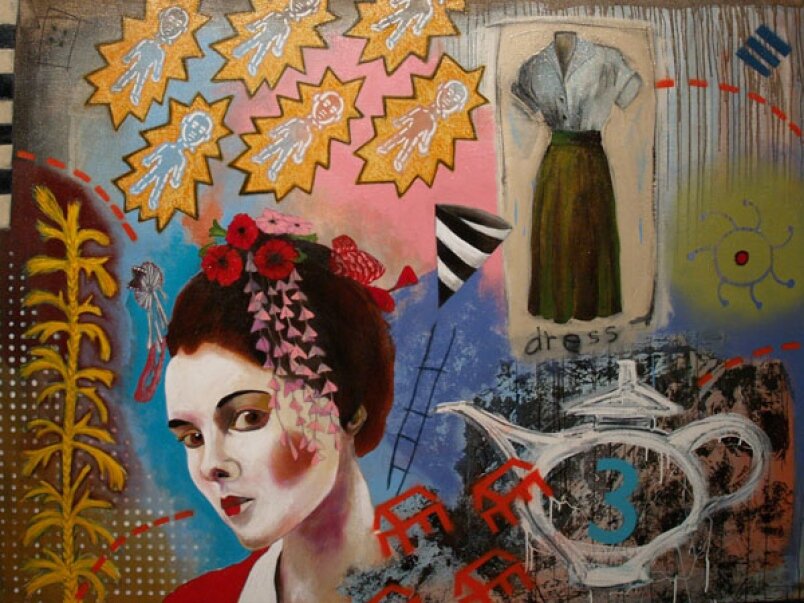
Reject rationality, embrace dysfunctionality.
These are the prime ideals which were born out of the Dada Movement.
Disgusted by the senseless violence that the First World War had brought to their doorstep, much of the European artistic community fled to the neutral state of Switzerland, to get away from the inhumane conditions of war. Soon enough, the pioneers of the Dada Movement such as Hugo Ball, Emmy Jennings, Tristan Tzara and others would express their apprehension to the social, political and cultural ideas of the time in a Zurich nightclub called the Cabaret Voltaire.
The idea soon spread to Hanover, Cologne, New York, and Paris. While each city had a distinctive Dada identity, ideas migrated from centre to centre, transported by artists who traveled between cities after the end of the World Wars. As far as the Cabaret Voltaire is concerned, some of the more engaging discussions involved the questioning of common sense, public opinion, education, system of governance and the lifestyle that prevailed at the time. One of the main revelations which came out these discussions was that the culture of the society was deeply flawed and everything had to be destroyed to begin a whole new way of life. Disease, death, pride, greed, materialism and religion was widespread and the Dadaists believed that this never-ending cycle must be annihilated and the clock reset to Year Zero.
When Hugo Ball kickstarted his Dadaist activities, never did he realize that it would go on inspire much of the genres and styles that influence our lives today. Everything from avant-garde fashion to Motown music; from Punk rock and graffiti to hipster fashion is inspired by Dada. Now, it might seem superficial or nihilistic to us but the conventions of society, art and literature were sacrilege and unpatriotic at that time. Something like Dada was needed to question all angles of society. The many works of art that were produced during this time were reflective of the sentiments against nationalistic propaganda during the First World War. If traditional artistic works was meant to enamor the senses, Dada art was created to shock them. This art ignored aesthetics and most of the artwork conveyed no meaning. Even if it did, it was that of chaos, hypocrisy and cynicism. This is clearly evident in the Dadaism’s influence on the visual arts such as photography, graphic design and paintings of the time.
Two of my favorite examples would be Marcel Duchamp’s penciled moustache on a replica of Leonardo da Vinci’s Mona Lisa and Man Ray’s Woman Smoking a Cigarette. Although these examples are a seemingly toned-down portrayal of Dadaist art, this movement led to the development of a lot of techniques which we see today such as collages, photomontages and also typography. Most Dadaists films are, for the lack of a better word, trippy. The best I’ve found so far are Hans Richter’s Ghosts Before Breakfast (1928) and Ballet Mécanique (1924) by Fernand Lager.
The widespread experimentation with the aesthetics of Dadaist filmmaking led to various innovations in cinematography techniques – most notably, the use of stop motion in live action films. To the Dadaists, art did not need to be restricted to pen and ink, paint and canvas – Dada created art out of everyday objects such as newspapers, pipes, magazine cutouts and light bulbs. Dadaist philosophies also diffused into the literary arts. And one of the best representations of this phenomenon is the emergence of sound poetry. Poems were recited in French, German, and English.
The most iconic images of ‘being Dada’ was Hugo Ball, dressed, in a bizarre cardboard costume, chanting his sound poetry while, writer-cum-part-time drummer, Richard Huelsenbeck joined in to provide a continual beat. Mediterranean, African music as well as jazz was played during the Dadaist meetings, clearly showing a difference from the rigidity which could be found in any mainstream cultural gathering.
Even though the influence of Dada can be seen across many cultural spheres, the core ideology behind it was political. Their interests lay primarily in rebelling against what they saw as cultural snobbery, bourgeois convention, and political support for the war. It was also form of self expression to protest the growing discontentment and trauma that the war had brought to the world. Although it was nonsensical to the point of whimsy, almost everyone involved was extremely serious about its potential. Dadaism mostly died down because its purpose had been more or less fulfilled and it was in danger of becoming acceptable by the mainstream. As a broad movement, it might have come to an end but it was the mother of movements, genres and styles that would later redefine popular culture such as surrealism, pop art, hippie subculture, punk rock and the beatniks.
_________________________________________________________________
This article was previously published in the dfuse.in Yearbook. Download it here.




